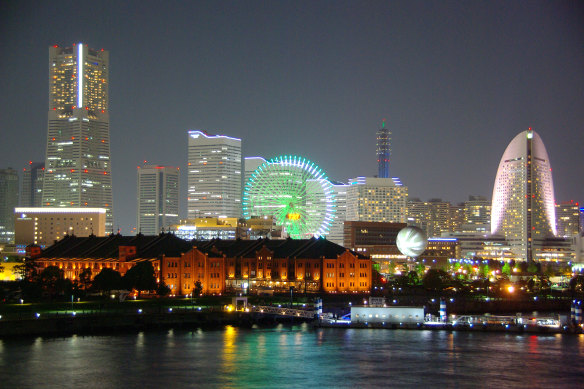Port guide: Yokohama, Japan
Yokohama is right beside Tokyo, yet overlooked. Here’s why you should visit this port city with lively international connections.
Who goes there
Yokohama is mostly used by mid and large-sized ships from companies such as Azamara, Celebrity, Cunard, Holland America, MSC, Norwegian, Princess and Royal Caribbean. Smaller upmarket ships tend to dock in Tokyo instead, only 11 nautical miles away. Many lines make round-trip, Japan-intensive cruises, but Yokohama also features on longer cruises to Asian cities, or even repositioning journeys to Vancouver or Seattle.

Yokohama Harbour.
Sail on in
Sailing into Yokohama is a thrill. This is an historic port, forcibly opened up to international commerce by the US Navy in the 1850s, when it was just a fish-stinking village processing sea cucumbers. Now it’s Japan’s biggest port, and one of its biggest cities. Skyscrapers soar and you can spot the lazy turn of the harbour’s giant Ferris wheel even before you dock.
Berth rites
Many small cruise ships dock at Osanbashi in the middle of the action, some at almost-adjacent Shinko Pier, while the largest arrive at more inconvenient Daikoku Pier on a harbour island because they can’t navigate beneath Yokohama Bay Bridge. Osanbashi has a bold, undulating design of wooden walkways and grassy roofs which you can walk on, and which make for wonderful lookout posts. Column-free architecture provides a light, spacious interior whose ramps create efficient flow.
Before and after
Hyatt Regency Yokohama is a short walk from Osanbashi terminal and near a metro stop. So is New Grand Hotel, which has art deco architecture and a restaurant modelled on 1930s French liner Normandie, the largest and fastest cruise ship of its day. You’ll need a full day to explore, so stay a night. After that, you’ll want to relocate to Tokyo, a 30-minute train ride away.
Going ashore
You could spend all day on the waterfront if you were so minded. Its attractions include decommissioned 1930s cruise liner Hikawa Maru, the quirky Cup Noodles Museum, and Minato Mirai 2 with its Ferris wheel, shopping malls and Landmark Tower observation deck. Red Brick Warehouse is full of boutique stores and fast-food outlets. The excellent Yokohama Museum of Art is a little further away.
Don’t miss
A wander through The Bluff, a pleasantly leafy area of Yamate, the former settlement area for 19th-century American and European traders, sailors and diplomats. It has a disconcerting look of Europe thanks to its residential architecture, churches, banks and consulates. Some of the villas are open as museums.
Get active
Options are limited. However Yamashita Park stretches 700 metres from Osanbashi, and its wide seashore promenade makes a good jogging track. For a more tranquil leg-stretcher, head to Sankei-en classical garden, Its meandering pathways lead past ponds, teahouses and historical buildings relocated from across Japan. During cherry-blossom season, its 2000 cherry trees are stunning.
Best bites
You can get any cuisine in this internationally minded city, but if you want to sample elaborate, multi-course kaiseki Japanese cuisine then Shunotei Hira will oblige: you can sit on tatami mats and gaze over a little garden. Yokohama has Asia’s largest Chinatown, famous across Japan for its (mostly Cantonese) food. It has some 600 restaurants, food halls and noodle and dumpling shops; street stalls sell a further range of snacks.
Further afield
It’s tempting to rush off to Tokyo for a too-quick tour around its major sights; many ships offer excursions to Tokyo Tower, various shrines, and the imperial palace park. Don’t, unless you really have no time to stay in Tokyo post-cruise. An alternative is a one-hour coach trip to seaside town Kamakura, former capital of a small shogunate. Its hills are scattered with Buddhist temples, Shinto shrines and orange tori gates.
Sign up for the Traveller Deals newsletter
Get exclusive travel deals delivered straight to your inbox. Sign up now.